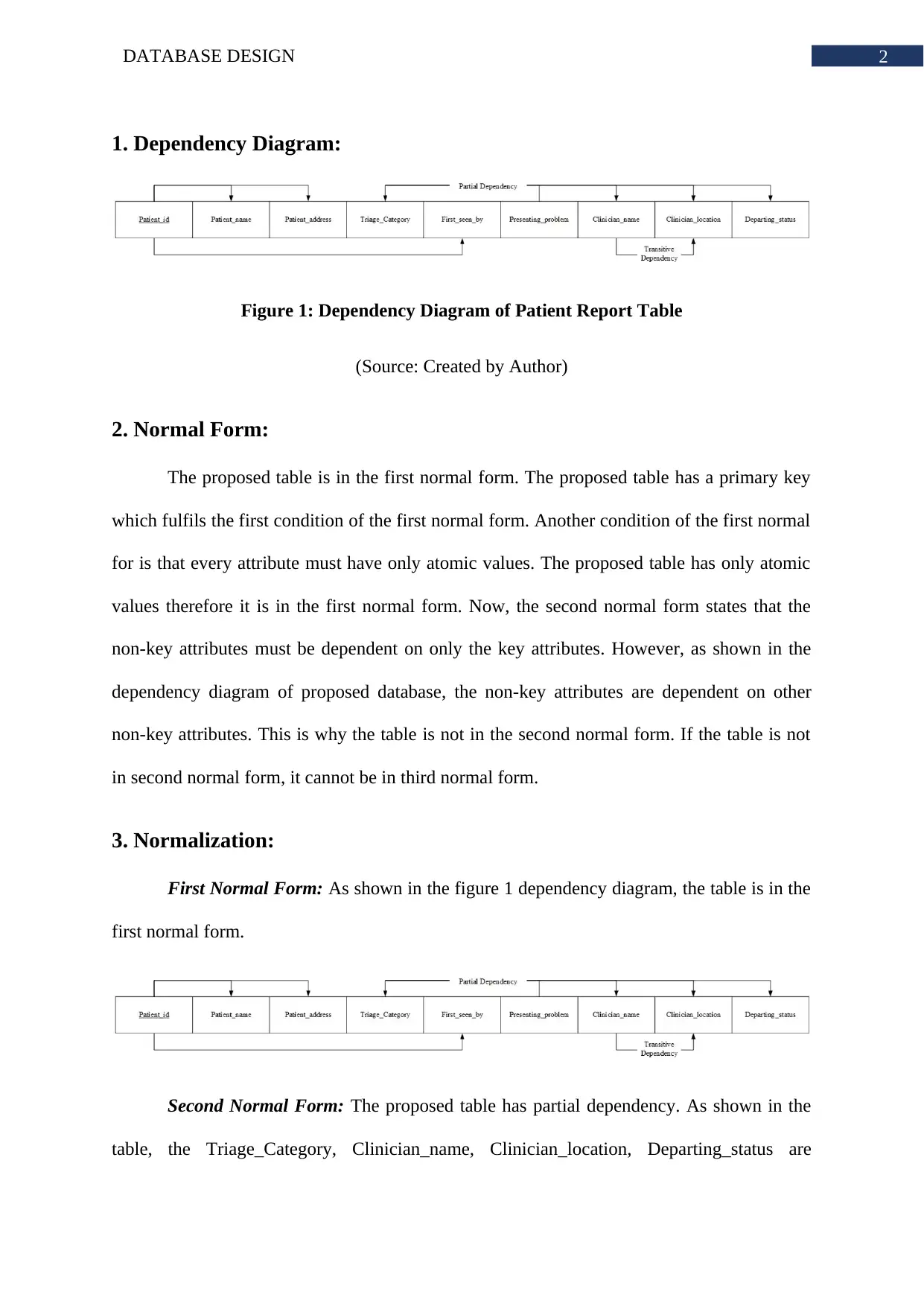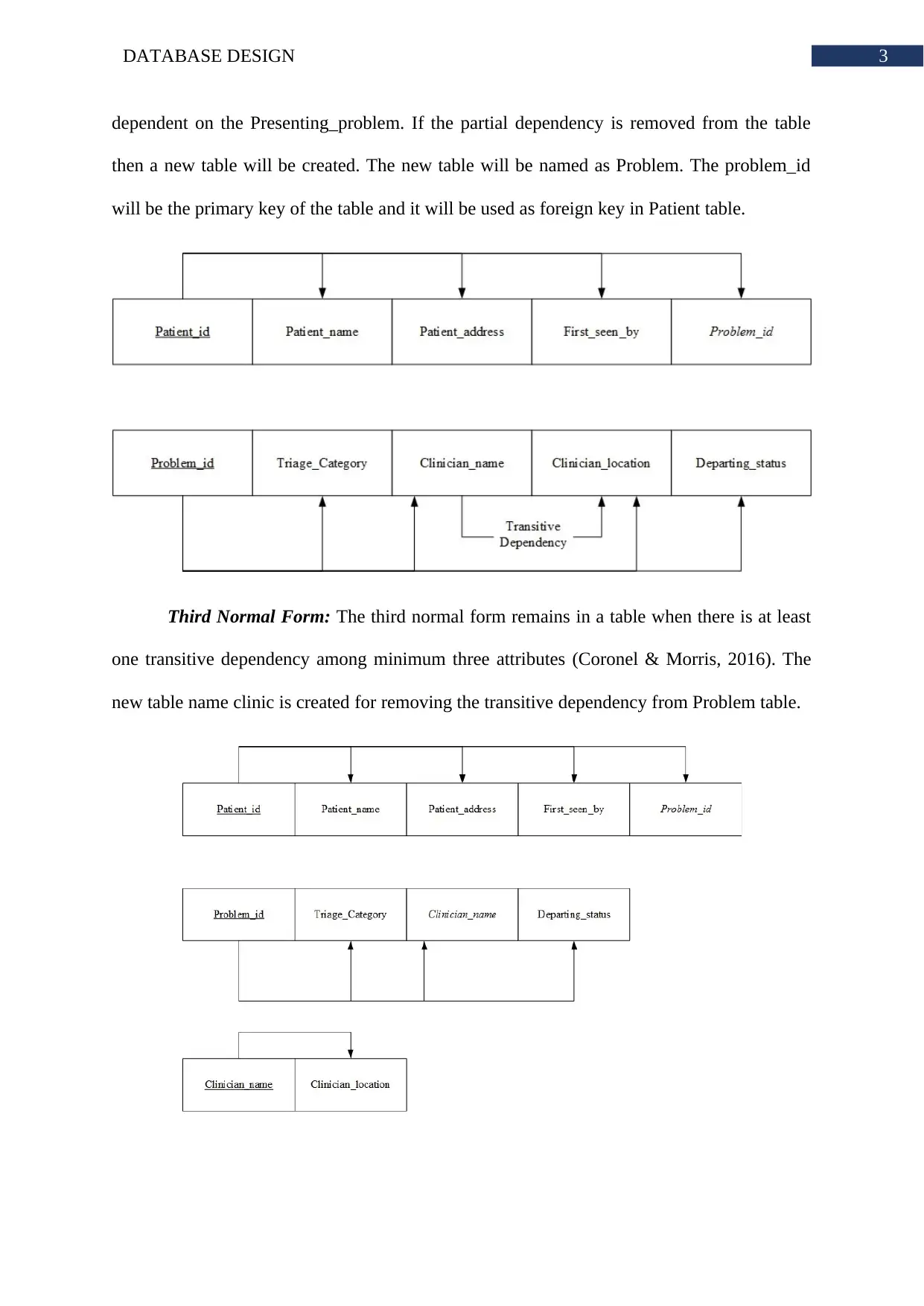Database Design: Normalization Assignment - Patient Report Analysis
VerifiedAdded on 2023/04/22
|6
|558
|178
Homework Assignment
AI Summary
This assignment solution addresses a database design problem involving the normalization of a patient report table. The solution begins with a dependency diagram illustrating the relationships between attributes within the table. It then identifies the initial normal form of the table. The core of the solution involves decomposing the table into a set of 3NF (Third Normal Form) tables, with accompanying dependency diagrams for each. Finally, the solution presents a relational data model, including all necessary attributes and integrity constraints. The assignment demonstrates an understanding of database normalization principles, including the identification and removal of partial and transitive dependencies, and the creation of an entity-relationship diagram.
1 out of 6









![[object Object]](/_next/static/media/star-bottom.7253800d.svg)